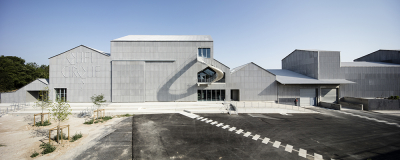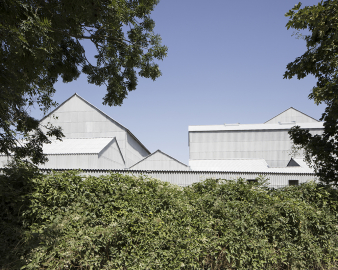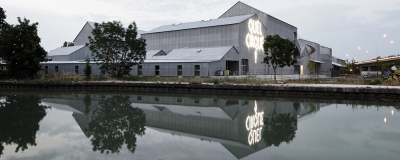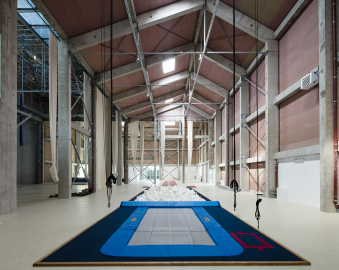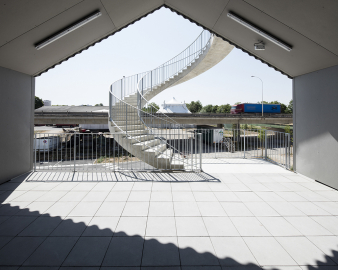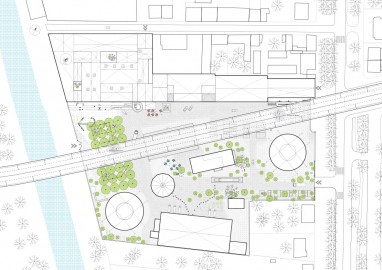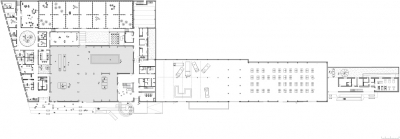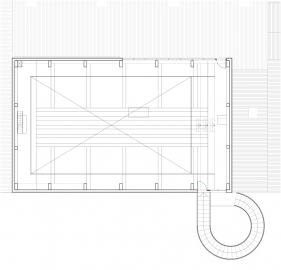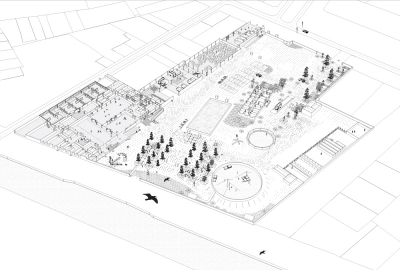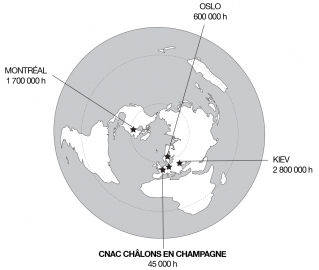National Center for Circus Arts
In order to affirm their presence and their role within the town, the school building and housing are fitted into previously empty spaces. The location and design of these volumes forms an extension of the existing buildings, recreating a façade along the site, aligned with the northern hangar.
The project consists of extending the CNAC onto the fallow farmland of the La Marnaise Agricultural Cooperative site (roughly 20,000 sq. m).
The CNAC is currently located in the historic Châlons-en-Champagne circus, just a few hundred metres from the silos. With the project now completed, the two sites now complement one another.
The architects chose not to demolish anything, and instead to renovate the existing buildings and leave the open areas for the fairground activities traditionally associated with the circus.
This involves:
- creating a new building, the "school building", between the Rousseau silo and the northern hangar and renovating the existing silos;
- creating a 13-unit student housing building at the corner of the Rue de l'Industrie and the Avenue du Maréchal Leclerc;
- reusing some of the existing roads and exterior fittings.
In order to successfully integrate the different buildings and visually unify all of the CNAC buildings with the northern hangar and the Rousseau silo, the façades of the school building and housing are made of natural coloured Eternit-type fibre cement, with caisson rafters supporting undulating plaques of fibre cement.
Rather than defining itself in opposition to the existing buildings, the project extends them, echoing their materials and forms. Eternit was chosen to restore the reputation of a cheap material.
The frame, with its archaic beauty, was designed in a studio and prefabricated on site: the corners, support and assembly pieces and connectors are all virtually identical so the moulds could be reused.
The concrete assemblies were designed as monolithic blocks, with no other materials visible, thanks to saddles hidden inside the concrete elements. The concrete frame supports the structure, leaving its full volume open. No maintenance will be required.

